There are 210 chalk streams in the world, 160 of those reside in the UK with a generous proportion in Hampshire.
My walk today incorporated one of these idyllic areas - St Catherines Hill in Winchester.
St.Catherines Hill was cut off to the east in controversial circumstances in the 90's when the M3 was extended through Twyford Down. I wasn't aware of the habitat before it's adjustment at the hand of man back then, but can only share it's abundance as I see it today, and my focus still concentrates on the Lepidoptera family especially as July and August are the main months to take advantage of their main emergence and ultimate beauty.
The start of the walk follows the River Itchen, a classic chalk stream with clear water that is a haunt of Brown Trout, Water Vole, Crayfish (whether natural white clawed or the invasive blue signal) and always the possibility of an Otter - ever the optimist !
There are two paths here, one that follows the tree line, the other follows the river. I'm always attracted to the water so I chose that which leads to the bottom of the hill...
There were many Mallard along the route, plenty of juveniles that have made it past those treacherous first few weeks and quite a few males in their eclipse plumage.
The Church of St.Cross sits idyllically across from the river
As I reached the foot of the hill and away from the river I kept hearing the calls of a juvenile Buzzard and eventually located it at a fair distance away...
The sound of the river is silent except at the end when you reach a set of sluice gates. They were being patrolled by a Southern Hawker Dragonfly but it eluded any chance of a photograph
The base of St Catherines Hill has an impressive set of wooden steps but I rejected these for an area to the left, less populated with people and more populated with Insects...
This rather innocuous looking part of the hill has an abundance of wild flowers which in turn draws in a myriad of creatures. The main protagonist being the Chalkhill Blue Butterfly which can fly in considerable numbers here. It was cloudy however, but warm, so I thought I might see one or two...
My first sighting was at the base of the hill, it was an immaculate male...
Meadow Browns were appearing too. A male here, then tries his luck with a female. She wasn't interested!
Although female Chalkhill Blues tend to stay discreetly out of sight I had my first view almost immediately feeding on a Greater Knapweed...
There are so many wild flowers here. It is unimproved chalk downland. No artificial fertilisers, it is just grazed by sheep and what fertiliser there is, is also provided by them too.
Harebells nodded delicately in the breeze...
As I ascended, so did the temperature and the number of Chalkhill Blues' too...
More males and females...
A Speckled Wood made a brief distraction...
I lay prostrate on the hillside to try and emphasize the insects point of view through the grass and flowers....
Betony grew profusely
as did Dwarf Thistle
Still trying to identify this one, any help appreciated...
I sat at the top for lunch and drank in the view... A warm Summers day, Butterflies flew low over the wildflower meadow all around me, if this wasn't heaven I felt pretty close.
The Chalkhills' now numbered in their tens, fifty plus at least on this part alone!
Overhead, Mans' attempt at flight arrived at Southampton airport...a Flybe Dash 8
and an Aurigny Trislander arriving from the Channel Islands
I finished my lunch and had difficulty drawing myself away from all those Butterflies but onwards and upwards I pressed. At the crest I found a path that circled the hilltop and followed it. A Green Veined White added to my butterfly list...
Lots of Buddleia grow here and Red Admiral feasted on the nectar
I had seen many Six Spot Burnet Moths flying and also their chrysalis. This one attached to a thistle head
The adults are a little more photogenic.....
Gatekeepers are one of the more alluring of the Brown Butterflies and appeared at the top of the hill along with a basking Red Admiral on the path right in front of me and a rather worn Marbled White, not long to go for these now...
They even alighted on the path in front of me and at times I feared I might squash one...
 The Burnet Moths were constant around the top of the hill and feeding on the Field Scabious
The Burnet Moths were constant around the top of the hill and feeding on the Field ScabiousThe Chalkhills' just wouldn't leave me alone!
I had reached the Northern side looking into Winchester with the River Itchen below me.
I decided to head back south up over the top of the hill and found another wildflower meadow directly in front of me.
A Large White fed on the Hemp Agrimony that grows in forests here.
I do have a soft spot for the Harebell. The nodding 'bells' seem so delicate and vulnerable but withstand quite a blast being so exposed on the hillside. They also have the chalky blue colour that befits such a place.
The Church of St Cross looked even more resplendent the higher I walked.
Field Scabious grow so well here and compliment the Harebell in colour
I was back on my stomach again to try to captivate the Harebell as they blew in the wind, Oh and some more Chalkhill Blues' happened to cross my path!
I had descended but still the Blues surrounded me. I must have seen well over a hundred here.
At the end of the hill the meadows looked like a scene from a Constable painting
I retraced my steps along the Itchen River, no Otters I'm afraid
A juvenile Song Thrush was hopping along the path ahead of me and would occasionally stop and look, apparently unconcerned. It's parent wasn't far away so it was clearly waiting to be fed.
The Mallard were just chillin' along the bank
As I stopped to speak to a couple from Wales on holiday, a female Banded Demoiselle sat enticingly before me...
I had returned to the car park but as it was still relatively early afternoon I had time to visit Gilkicker Fort to see what it had to offer. It was still quite warm with a strong westerly breeze coming in off the Solent.
The Fort is bisected by a golf course so I had to dodge golf balls negotiating the footpath!
Pied Wagtails weren't interested in golf as they fed on insects on the greens...
The approach to the fort has lakes bordered by bramble and scrub, ideal for all sorts of wildlife. I spotted a Rat crossing in front of me. Apart from Meadow Browns and Gatekeeper Butterflies there wasn't too much around so I climbed the hill overlooking the fort to get a better view...
Inside the fort which has restricted access , some young boys were playing music out the way of prying eyes..except mine! I was more interested in the view and if any rare butterflies appeared, which they didn't.
I looked east across the Solent towards Portsmouth and Southsea as the Hovercraft headed towards Ryde and the Wightlink ferry chugged back into Portsmouth Harbour
The Spinnaker Tower in Portsmouth clearly visible on the skyline...
Then west towards Tennyson Down on The Isle of Wight
I clambered down and admired the Rosebay Willowherb on the side of Fort Gilkicker, then headed back to the van and home.
Such an awe inspiring day in a quintessentially English habitat. How lucky us mortals be....
N.B
The title for this post is an excerpt from the poem 'Blue- Butterfly Day' by Robert Frost


















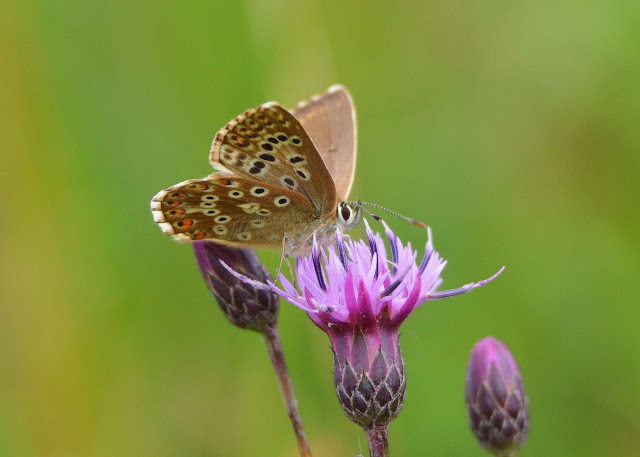







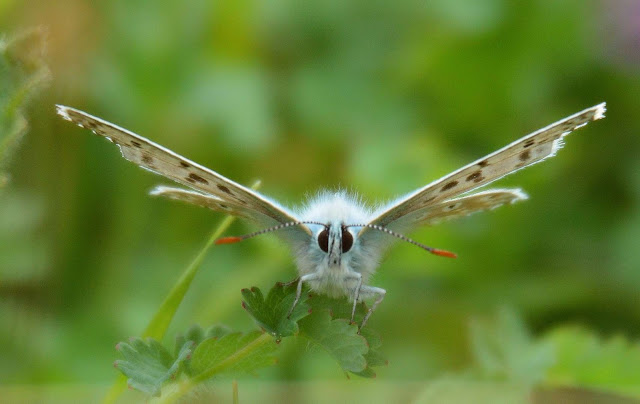



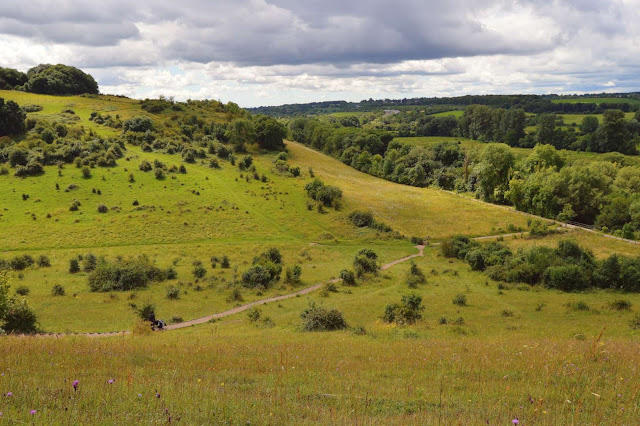





































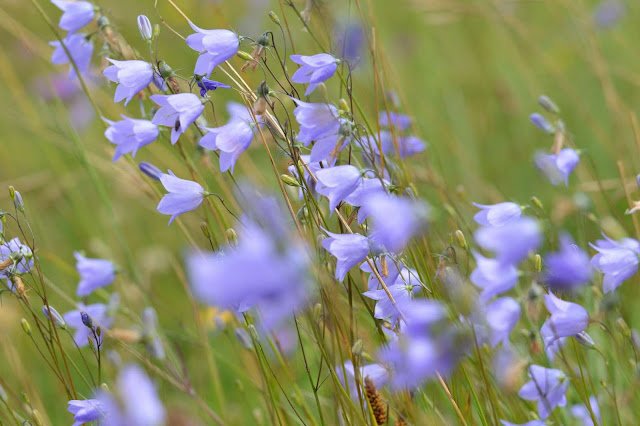












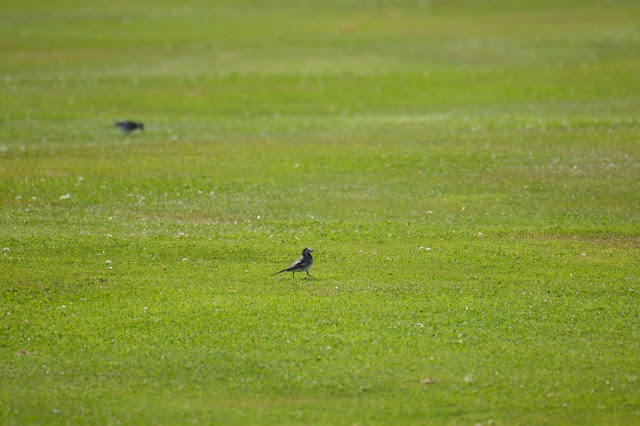







No comments:
Post a Comment
Please leave me a message if you would like to do so.